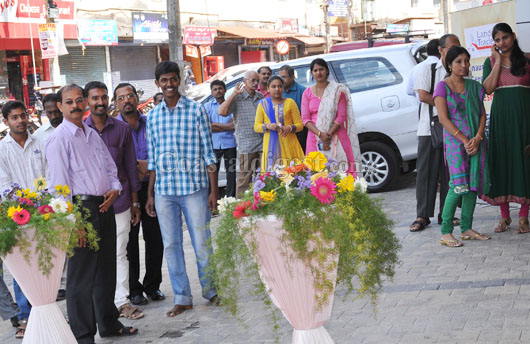Mangaluru, Nov 30: Aadheesh Avenue, an ultra-modern commercial complex by Land Trades, the pioneering name in the field of real estate in this region, was inaugurated on Sunday at 12 noon.
Mangaluru South MLA J R Lobo, who formally inaugurated the complex located at MG Road, adjacent to Besant Women's College, said that that the new building contributed to enhance the beauty of the MG Road.
He pointed out that builders like Shrinath Hebbar, the proprietor of Land Trades are immensely contributing towards growth of the city. The MLA also lauded the Land Trades for maintaining quality in all its projects.
Mayor of Mangaluru City Corporation Mahabala Marla said that within a decade this port city would be one of the fully developed and modern cities of India. Wishing all success for the future endeavours of Land Trades, he said builders are part of development.
Entrepreneur Sadananda Shetty, former mayor Shashidhar Hegde, corporators Ashok Kumar, Naveen D'Souza, Advocate Shankar Bhat, Kallige Taranath Shetty also congratulated the builders on the occasion. Journalist Manohar Prasad compered the programme.
According to Shrinath Hebbar, proprietor of Land Trades, this new business complex has the best of features and amenities and will be an important landmark for the commercial hub of Mangaluru.
A six-storey structure, Aadheesh Avenue has parking facility on two basement floors, commercial space and parking on the ground floor. The three upper floors house offices ideally suited for businesses and as consultation chambers for professionals like advocates, chartered accountants and doctors.
“All the commercial spaces in Aadheesh Avenue are sold out. I very touched by the popularity and trust that people have reposed on Land,” says Shrinath Hebbar.
The commercial complex has all mandatory safety and security systems and the building is equipped with best fire fighting systems. There are two automatic lifts, continuous power and water supply. With spacious parking facilities, Aadheesh Avenue will certainly be a favourite commercial complex of the city, says Hebbar.
Land Trades Legacy: Founded in the year 1992 by Shrinath Hebbar, Land Trades has over the years emerged as a trustworthy real estate and developers firm by offering the best of facilities to its clients. The firm enjoys a well earned reputation for excellence in quality and timely completion of projects - its professional ethos being further authenticated by ISO international quality certification and CRISIL rating.
Other prestigious projects of the firm, like Maurishka Palace near Kadri Kambla and Atlantis at Bendore are nearing completion. “Solitaire” a modern residential complex with 32 floors and 144 apartments is also coming up on an expansive 2 acre plot at Hat Hill.
Budget Apartment: As a special gesture to customers, Land Trades which is nearing its silver jubilee year, will be constructing two budget apartment complexes at Mangaladevi and Yemmekere, where quality residential apartments would be available here at affordable rates.
























Comments
Woah! I'm really digging the template/theme of this site.
It's simple, yet effective. A lot of times it's difficult to get that \perfect balance\" between superb usability and visual appeal.
I must say you've done a great job with this. In addition, the blog loads super fast for me on Safari.
Exceptional Blog!
Here is my homepage - anxiety types: https://fr.wikipedia.org/"
Add new comment